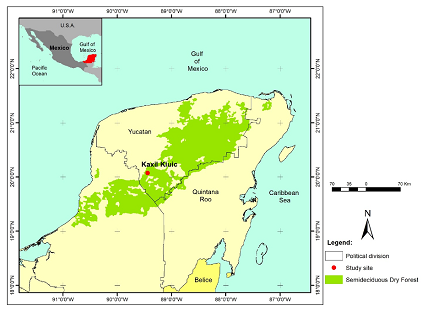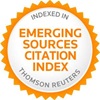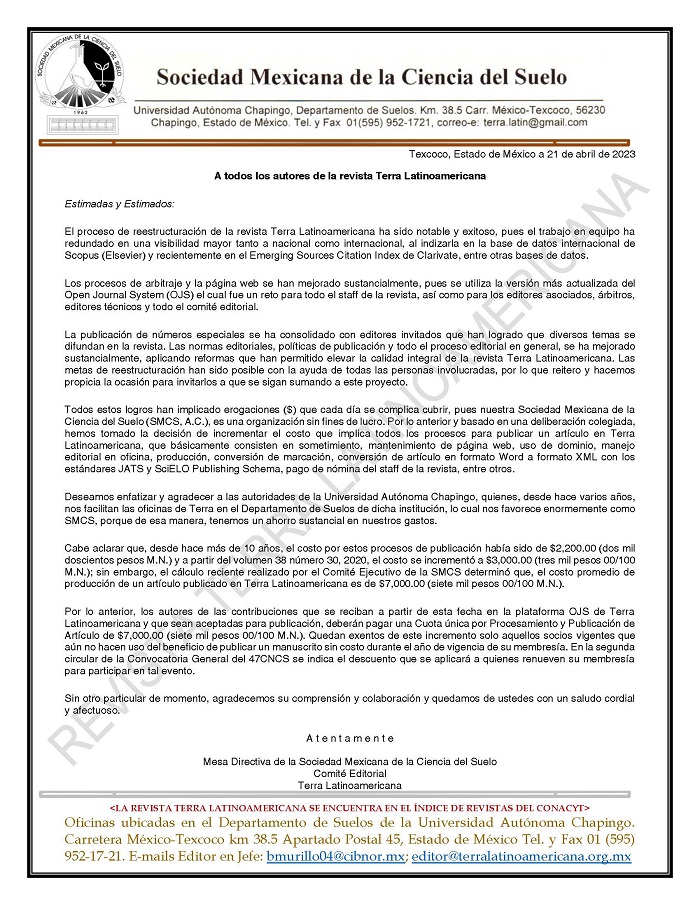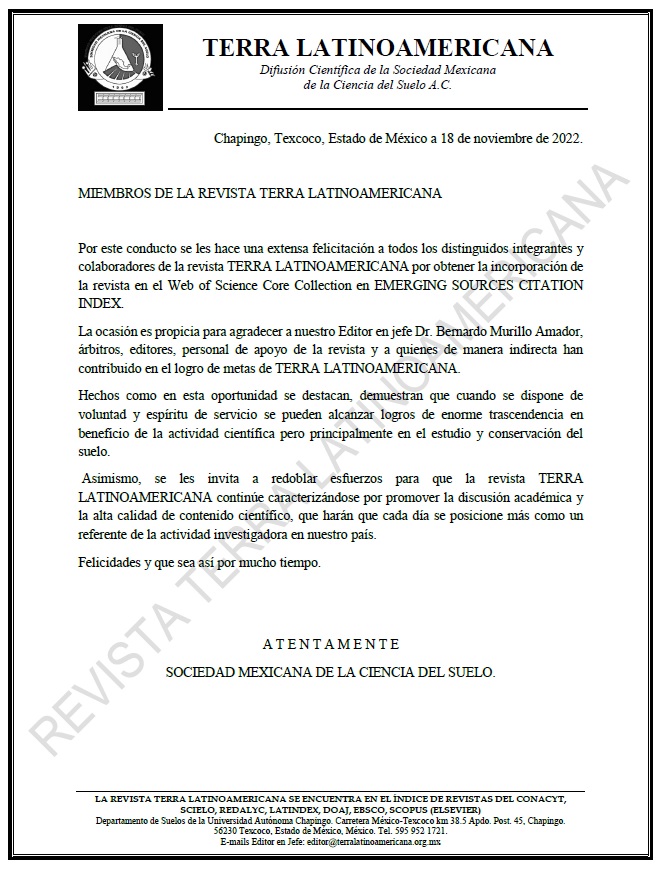Soil CO2 efflux fluctuates in three different annual seasons in a semideciduous tropical forest in Yucatan, Mexico
DOI:
https://doi.org/10.28940/terra.v40i0.968Keywords:
early dry season, soil temperature, soil volumetric water content, tropical dry forestAbstract
Tropical forest soils store a third of the global terrestrial carbon and control carbon dioxide (CO2) terrestrial effluxes to the atmosphere produced by root and microbial respiration. Soil CO2 efflux varies in time and space and is known to be strongly influenced by soil temperature and water content. However, little is known about the influence of seasonality on soil CO2 efflux, especially in tropical dry forests. This study evaluated soil CO2 efflux, soil temperature, and soil volumetric water content in a semideciduous tropical forest of the Yucatan Peninsula under two sites (flat areas close to and far from hills), and three seasons: dry, wet, and early dry (a transition between the rainy and dry seasons) throughout a year. Additionally, six 24-h periods of soil CO2 efflux were measured within these three seasons. The mean annual soil CO2 efflux was 4±2.2 μmol CO2 m-2 s-1, like the mean soil CO2 efflux during the early dry season. In all seasons, soil CO2 efflux increased linearly with soil moisture, which explained 45% of the spatial-temporal variation of soil CO2 efflux. Soil CO2 efflux was higher close to than far from hills in some months. The daily variation of soil CO2 efflux was less important than its spatial and seasonal variation likely due to small diel variations in temperature. Transition seasons are common in many tropical dry forests, and they should be taken into consideration to have a better understanding of the annual soil CO2 efflux, especially under future climate-change scenarios.
Downloads
Publication Facts
Reviewer profiles N/A
Author statements
- Academic society
- Terra Latinoamericana
- Publisher
- Mexican Society of Soil Science, C.A.

















